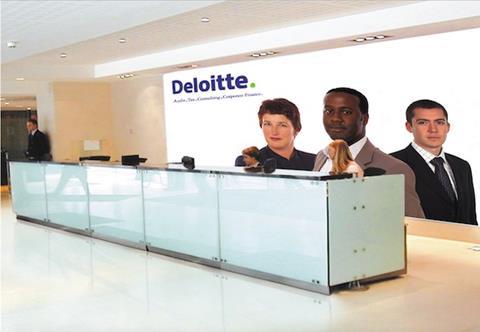
Professional services organisation Deloitte UK has reported a mean gender pay gap of 18% for hourly fixed pay at 5 April 2017.
The organisation has reported its gender pay data in its 2017 gender pay report, in advance of the government’s April 2018 deadline for compliance with gender pay gap reporting requirements.
This is the third year that Deloitte UK has published its gender pay data, after it voluntarily published reports in both August 2015 and August 2016. Deloitte UK has also published its data on the government’s online gender pay gap reporting viewing service.
Deloitte UK has a median gender pay gap of 15% based on hourly fixed pay. The mean gender pay gap for bonus pay, which takes into account the bonuses paid in the year to the snapshot date of 5 April 2017, is 51%, and the median gender pay gap for bonuses is 39%. Over the same time period, 62% of women received a bonus compared to 61% of men.
A third (33%) of employees in the highest pay quartile at Deloitte UK are women, compared to 42% in the second quartile, 46% in the third quartile, and 49% in the lowest pay quartile.
Deloitte UK has attributed its gender pay gap and bonus gender pay gap to the fact that women hold fewer senior positions within the organisation than men. In April 2017, 43% of the overall employee workforce were women, however, only 18% of partner-level roles were filled by women. Partner roles attract the highest levels of remuneration at the organisation. According to Deloitte UK’s pay analysis, if the gender pay gap is adjusted for this structural difference in the workforce, the pay gap drops to 2.5%.
In order to reduce its gender pay gap, Deloitte UK will maintain its focus on its Women in leadership action plan, which was implemented in 2014. The plan features a range of interventions introduced between 2014 and 2016 to help women reach senior positions within the organisation. Measures within the programme include maintaining a bias-free recruitment process that ensures to mention agile working opportunities, a return-to-work programme that offers women a 20-week paid work placement to support them in re-launching their careers, and a 12-month programme for senior women in the business that provides development opportunities and access to networking groups.
The organisation also runs a working parents transitions programme. This helps primary carers transition from maternity, paternity or adoption leave back into the workplace, and includes coaching sessions for carers and line managers.
Deloitte UK is also working towards gender diversity targets that it set in 2012. The organisation committed to women making up 25% of partners by 2020, and 30% by 2025. In June 2016, 31% of the employees who were promoted to partner level were women, compared to 21% in June 2014. As of 1 June 2017, 19% of partners at Deloitte UK are women.
The gender pay gap reporting regulations require organisations with 250 or more employees to publish the difference between both the mean and median hourly rate of pay for male and female full-time employees; the difference between both the mean bonus pay and median bonus pay for male and female employees; the proportions of male and female employees who were awarded bonus pay; and the proportions of male and female full-time employees in the lower, lower middle, upper middle and upper quartile pay bands.
Emma Codd, managing partner for talent at Deloitte UK, said: “Increasing gender pay gap transparency is a topic we’ve taken a leading and visible position on for some time. We have been voluntarily reporting our gender pay gap since 2015 and worked closely with the Government Equalities Office to produce their report Trailblazing transparency: mending the gap.
“Our aim is for everyone at Deloitte to be able to build a successful career without compromising their life outside work, whether that be for family life, personal interests or other reasons. We believe achieving this goal requires a combination of deliberate programmatic actions and ensuring that we provide an inclusive culture and an agile, flexible working environment for our people to operate in.”











